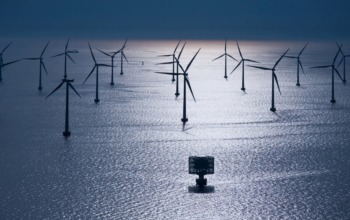Automatic Self-Optimization of Wind Turbines

The turbines are learning to use sensor data on parameters such as wind speed to make changes to their settings. These changes ensure the turbines can optimally exploit the prevailing conditions. Wind power facilities can’t always generate their maximum electrical output when wind speeds are moderate or low.
Specialists for learning systems at Siemens Corporate Technology (CT) developed the self-optimization software for wind turbines in cooperation with Technische Universität Berlin and IdaLab GmbH in the ALICE project (Autonomous Learning in Complex Environments), which is funded by Germany’s Ministry of Education and Research.
The researchers are presenting the results of their work at the CeBIT trade show (March 10–14) in Hanover. Their solution enables turbines to produce around one percent more electricity annually under moderate wind conditions, while also reducing wear and tear.
The researchers have a demonstration wind turbine unit that uses its own operating data and gradually increases its electrical output. The scientists’ approach combines reinforcement learning techniques with special neural networks.
A neural network is a software algorithm that operates in a way similar to the human brain. For several years now, Siemens CT has been developing neural networks in order to model and predict the behavior of highly complex systems, such as wind farms, gas turbines, factories, or even stock markets.
The software programs learn from historical data, which also enables them to forecast the future behavior of a system. A model can thus be created that predicts the electrical output of a wind turbine under specific weather conditions.
The researchers examined a large amount of very noisy data to identify relevant attributes that would enable the efficiency of a wind turbine to be improved by changing settings such as rotation speed. Patented neural networks were then used to create a so-called reinforcement learning policy from the analysis results.
The system thus learns to change certain wind turbine settings in a manner that ensures the maximum possible amount of electricity is generated in a given situation. After just a few weeks, the system is able to define and store the optimal settings for common weather occurrences.
After an additional extended period of training, it can even regulate electrical output under rare and exceptional weather conditions. The technology was successfully tested at a Spanish wind farm last year.
Ongoing analyses of relevant oper-ating parameters ensure the system can continually improve itself through repetition. The methods used here can be employed in many other fields, which means additional Siemens products can also be taught to optimize their own operation.
Weitere Informationen:
Media Contact
All latest news from the category: Power and Electrical Engineering
This topic covers issues related to energy generation, conversion, transportation and consumption and how the industry is addressing the challenge of energy efficiency in general.
innovations-report provides in-depth and informative reports and articles on subjects ranging from wind energy, fuel cell technology, solar energy, geothermal energy, petroleum, gas, nuclear engineering, alternative energy and energy efficiency to fusion, hydrogen and superconductor technologies.
Newest articles

Sea slugs inspire highly stretchable biomedical sensor
USC Viterbi School of Engineering researcher Hangbo Zhao presents findings on highly stretchable and customizable microneedles for application in fields including neuroscience, tissue engineering, and wearable bioelectronics. The revolution in…

Twisting and binding matter waves with photons in a cavity
Precisely measuring the energy states of individual atoms has been a historical challenge for physicists due to atomic recoil. When an atom interacts with a photon, the atom “recoils” in…

Nanotubes, nanoparticles, and antibodies detect tiny amounts of fentanyl
New sensor is six orders of magnitude more sensitive than the next best thing. A research team at Pitt led by Alexander Star, a chemistry professor in the Kenneth P. Dietrich…





















